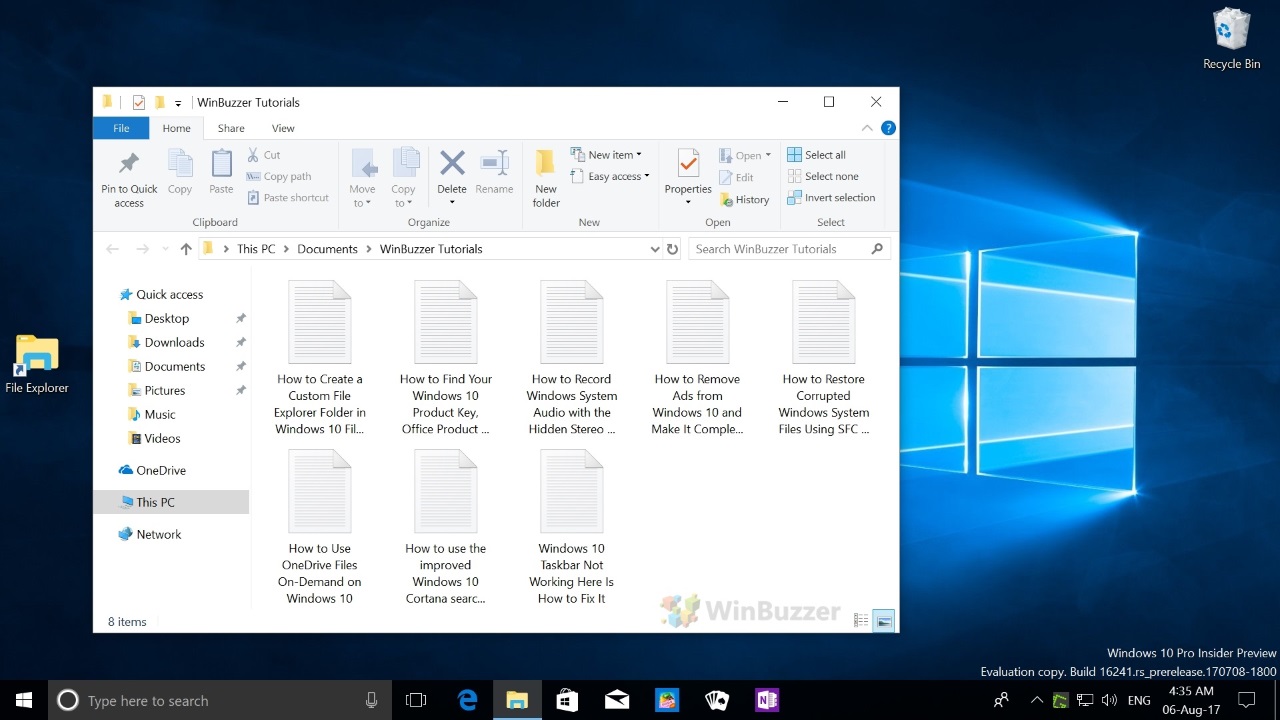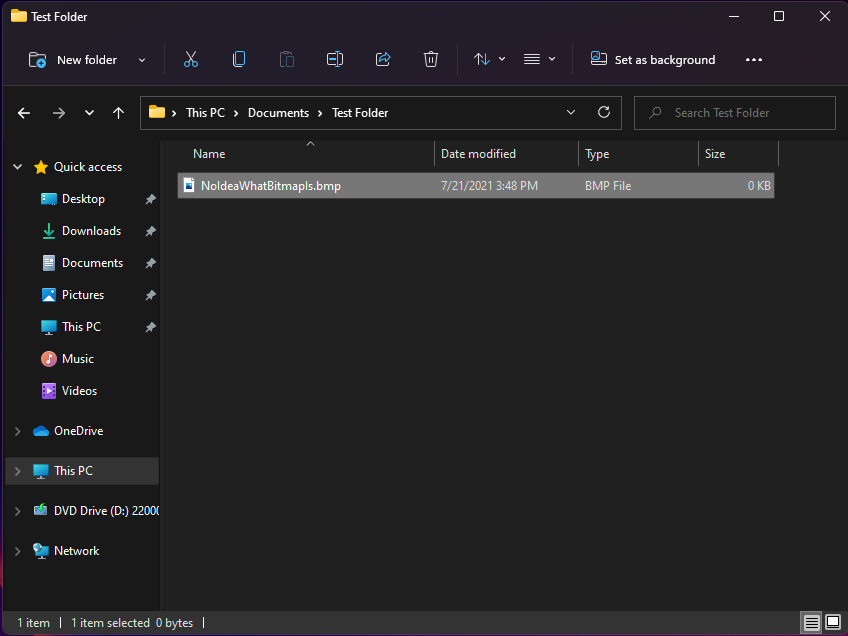

#How to make a new file on windows windows 10
If you want to switch back to the abbreviated Windows 11 icons instead of the Windows 10 ribbon, just reverse the process and uncheck the "Launch folder windows in a separate process box" so that it is unchecked.Įasy peasy. Re-launch (or open) File Explorer again and voila' you will have your old Windows 10 ribbon in Windows 11. MAKE SURE THE BOX IS CHECKED, and then click on "Apply" and then click on "OK" and close Windows File Explorer. Scroll down the list of items and look for "Launch folder windows in a separate process": Select "View" again from the three tabs available in "Folder Optinon" (i.e., from General, View and Search). Open Windows File Explorer and select the "View" menu (File, Home, Share View, etc.).pick "View"

When running Window 11, you can get the Windows 10 ribbon by simply unchecking a box in the "View" menu of "Folder Options". When prompted to save the file, if you want to keep the file, press "Y" for yes.It is definitely not necessary to edit the registry. When done, press Ctrl+ X to exit the file. You can use it like this: pico myfile.txtĪfter entering the command above, the editor opens and allows you to create a text file.

Several commands can create a text file in a Linux shell. Create a text file from within a Linux shell If the file did exist, you would be editing that file. Assuming this file does not exist, it would be created and saved in your current directory. In this example, you are using the start command to open Notepad with the file "myfile.txt". Note that there are no spaces between echo, the period, the greater-than sign ( >), and the file name.Īnother option for creating a text file from the command line is with the start command, as shown in the example below. In the example above, you are using the echo command to create a file named "myfile.txt" in the current directory. Instead, you can use the echo command at the Windows command line to create an empty text file in the current directory. Later versions of Windows removed the ability to use the edit command for this purpose. With earlier versions of Windows, a new file of any type, including text files, could be created using the edit command line command. While in the Windows command line, you also can create a new text file in the current directory. Create a text file from the Windows command line These same steps can be used in any other location on your computer, for example, another folder.
#How to make a new file on windows software
You can edit the file in the Notepad program or any other word processing software program, like Microsoft Word. You can change the name of the file to anything you want. Create a new text file from the desktopĪnother way to create a text file is to right-click an empty area on the desktop, and in the pop-up menu, select New, and then select Text Document.Ĭreating a text file this way opens your default text editor with a blank text file on your desktop. In many of these programs, you also have the option to save the file as a Rich Text Format.Īfter the file is created and saved, it can also be edited using Notepad or another word processing software program. When saving the file, change the file name or file type to Plain Text to save it as a text file. You can also create a text file using any other word processing software program, like Microsoft Word or WordPad. Open All Programs, Accessories, then click the Notepad shortcut.In the Run or Search box, type Notepad and press Enter.The Windows Notepad program can be opened using either of the methods below. txt file extension, which means no special formatting or fonts can be used. A text file is considered a plaintext file and Notepad is only capable of creating and editing plaintext files.


 0 kommentar(er)
0 kommentar(er)
